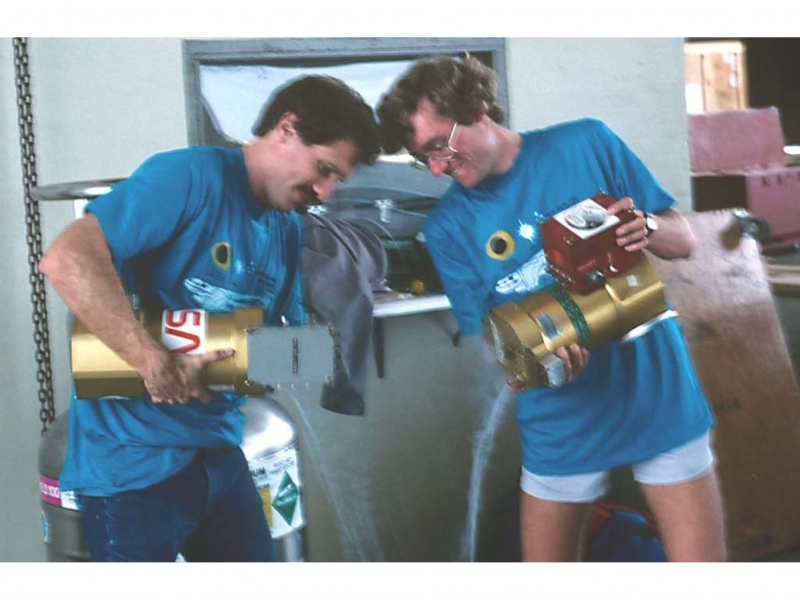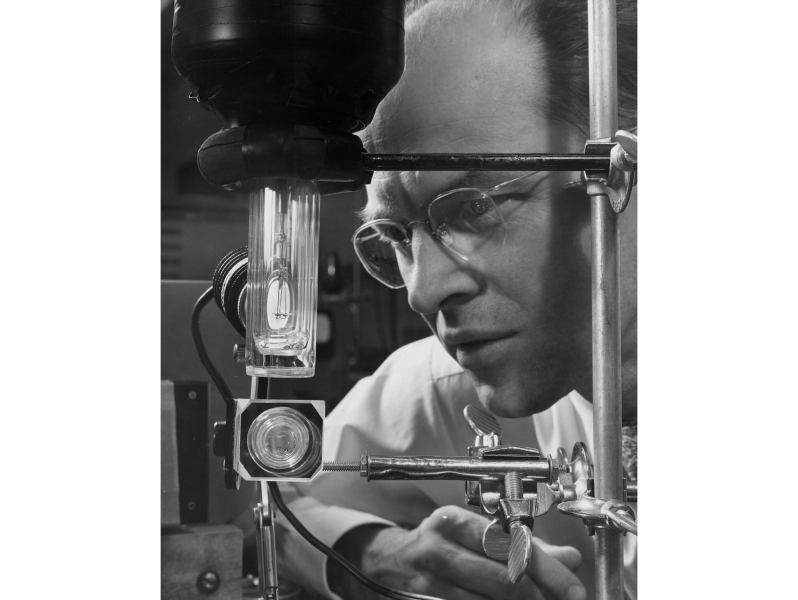
Tom Roellig and Greg Kopp emptying liquid nitrogen from the detector dewars prior to cooling them with liquid helium.
In the midst of July’s relentless heat, I’ve been thinking about different ways to cool off. A personal favorite is the classic ice-cold glass of lemonade. While refreshing, an iced beverage is relatively mild in the grand scheme of coolants. Liquid nitrogen, on the other hand, packs a much colder punch.
Under normal atmospheric pressure, Nitrogen exists as a liquid between -346°F and -320°F (-210°C and -195°C). This low boiling point makes liquid nitrogen an excellent coolant. Nitrogen was first liquified in a stable state by Polish physicists, Zygmunt Wróblewski and Karol Olszewski in 1883. Today, the cryogenic liquid has proved itself useful in many applications across society. It is used in the culinary arts with its ability to flash freeze foods. It is used in the biological sciences with its ability to preserve biological constructs. It is also, of course, used in the physical sciences, as demonstrated in the following photographs from the Emilio Segrè Visual Archives:

Tom Roellig and Greg Kopp emptying liquid nitrogen from the detector dewars prior to cooling them with liquid helium.
This photo was taken at the Andersen Air Force Base in Guam where dewars (cryogenic storage containers) were used to cool equipment used for far-infrared observations of a solar eclipse.

Heterodyne on KAO.
In a similar far infrared astronomy vein, here, Dr. Ruth Titz uses liquid nitrogen to cool part of the heterodyne receiver aboard the Kuiper Airborne Observatory.

Roger Macfarlane pours liquid nitrogen into the outer shielding chamber.
IBM Almaden Research Center scientists Roger M. Macfarlane, Robert M. Shelby and W. E. Moerner use liquid nitrogen to prepare a laser system to record computer data for high-density storage.

Semiconductor Injection Diode Laser.
While working at General Electric in the early 1960s, Robert Hall led a research team that developed the semiconductor injection laser. Here, Hall observes a semiconductor crystal suspended inside a glass container filled with liquid nitrogen. The liquid nitrogen helps keep the device cool when large amounts of electric current are passed through.
Add new comment